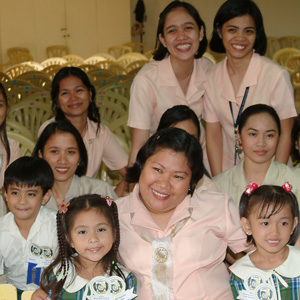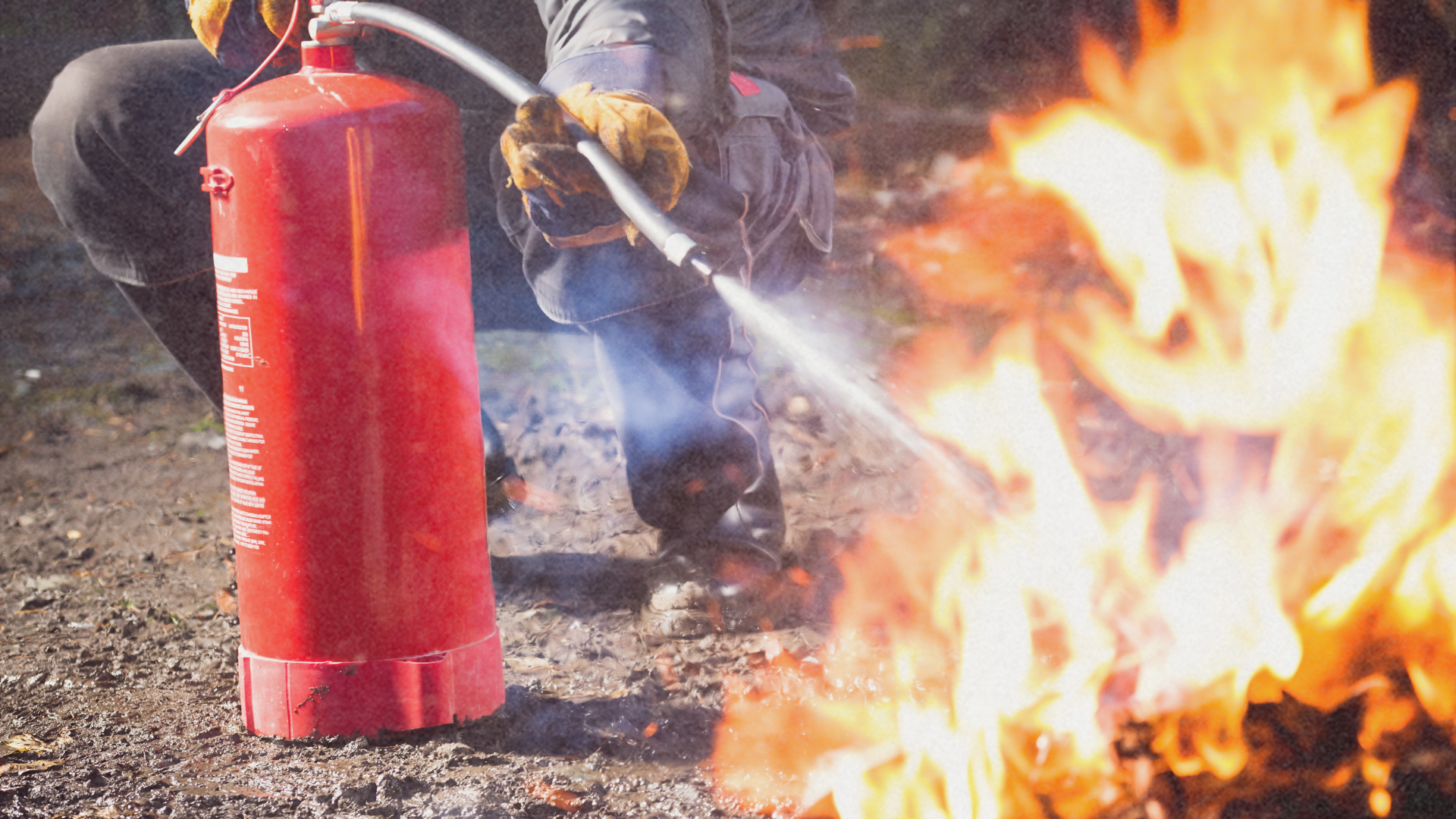In one typical day in school, 10-year-old Julian Carlo Miguel Alcantara and his nanny walked through the Ateneo Grade School parking lot after class eager to get home early on Feb. 24, 2009. Suddenly, a van cut across, seriously hitting the fourth-grader and severely injuring his nanny.
Getting killed inside the school premises was unthinkable for most parents who would think the school is a very safe place for their children. In reality, accidents do happen. Campus safety and security measures must be regularly checked, revisited, improved, and tightened.
Learning from a Painful Experience
Currently, the Ateneo Grade School has implemented a new traffic and road safety scheme to ensure the safe passage of students, which includes infrastructure provisions such as building more sidewalks and covered walkways, and reconfiguring the parking spaces. Such aggressive safety campaign is being promoted to the teachers, parents, students and school staff.
What are the safety and security issues that schools deal with? Are the teachers prepared in responding to campus crimes and violence?
In a parents’ orientation in one of the Catholic schools in Imus, Cavite, the guidance counselor assured the parents that their children are in good hands under the care of well-trained teachers who are also adept child care and safety. Teacher Olivia, head teacher for preschoolers, says that each preschool class has a teacher and an aide. Each class has about 20 pupils to enable the teacher to supervise and monitor each child. Preschool classes are scheduled three hours apart to give teachers sufficient time to prepare their lessons and look after the pupils.
Before the classes start, teachers wait for the preschoolers at the gate, while the aide would guide the pupils when going to their classrooms. At the end of the day, teachers accompany the children to their designated areas where the school bus drivers, parents, and guardians fetch their wards.
Teacher Olivia says that identification cards (IDs) are issued to people who are authorized by the parents to fetch their children. Teachers are tasked to stay in the school until the last pupil has been picked up. Private vehicles are issued school stickers. School bus services and drivers get approval and permits from the school.
In the same way, preschoolers are escorted by the teacher aide whenever they need to go to the restroom, which is usually located a few steps from the classrooms. Four- to six-year-olds are not allowed to mingle with the older students in the canteen. Preschoolers have packed snacks which they are allowed to eat inside the classroom.
Every summer, Teacher Olivia shares that Red Cross volunteers and doctors conduct first-aid training and health-related seminars in the school. Through this, teachers are taught how to deal with accidents and first-aid treatments for possible injured students.
Day Care Safety
At the Real Day Care Center in Bacoor, Cavite, nursery, kinder, and preparatory classes are handled by a day care volunteer. Heidi Sarao takes good care of around 40 pupils. “Hindi madali kasi mag-isa lang ako (It is quite difficult when you are alone),” Teacher Heidi notes her rigid training at the Municipal Social Welfare and Development (MSWD), which includes teaching techniques, child discipline, and safety. “Ligtas naman ang mga bata dito. Basta kapag hindi pa uwian, hindi sila pwedeng lumabas. Ang CR naman nandito sa loob kaya hindi na nila kailangan pang lumabas ng day care center (The children are all safe here. They are not allowed to go out. The comfort room is inside the room.),” she adds. No sophisticated security measures are available, nor are there uniformed guards. But Teacher Heidi feels secure with the local watchmen. The day care center is housed at the ground level of a modest two-storey barangay hall. The second floor is where the barangay captain and the barangay chairman hold office.
Strict Measures for Exclusive Schools
Among the exclusive schools in Cavite, Montessori enforces strict security and safety measures. One high school teacher says that a quarter of their students are foreigners, while a high percentage caters to the children of Cavite’s influential and affluent families.
“We cannot afford to be lax in our security measures. While we never had any untoward incident, we are always alert especially that our students belong to the rich families who could be targets of unlawful groups.” Visitors are strictly screened and required to log in and out. All entrances are manned by professional security guards, while the foot guards rove school grounds every hour. A separate entrance and waiting lounge are designated for non-students.
Teachers attend annual safety, security, and health trainings and seminars. “We are also trained on taking evacuation protocols in case of extreme emergencies. Every classroom is equipped with a medicine toolkit.” Uniquely, the classrooms do not have doors, and a fourth wall, for that matter. The “open” classrooms are cooler, spacious, and safer. In case of emergency, students have open and ready access to the stairs and ramps. Situated inside an exclusive village, the school administration closely works with the village association and the local barangays.
Community Partnership
While in-campus safety and security are largely the responsibility of the school administrators and the faculty, student safety surrounding school premises is the responsibility of the community. The local barangay watchmen lead this drive, along with the city or municipal police force and the local government unit.
Every school year opening in June, the Philippine National Police is deploying policemen near the schools to ensure the safety of both students and teachers. PNP Chief Director General Jesus Verzosa says in their effort to avert street crimes, he has directed all PNP regional offices and the national support units to put in place their operational plans for public security and police assistance. Police are always alert for tracking pick-pocketing, snatching, holdup, robbery, drug trafficking, gang wars, and raging pornography.
Need for Security
In 2008, it was reported that most public schools lack security. In Metro Manila, public high school teachers often have to deal with fraternity violence and drugs inside the campus. In some schools, the janitor also works as security guard. In a situation where public high schools hold classes from 6 a.m. to 8 p.m. with hundreds of students, one guard is not enough. Some students may get past the school gate with dangerous weapons and even drugs may be safely concealed in their bags.
Safety of the public schools relies on the PNP and the local patrols to maintain peace and order in the campus. Verzosa says more police help desks and assistance centers are being set up. The PNP is tapping the help of civic groups and volunteer organizations to assist in traffic control and other public safety concerns.
A report made by the Regional Security Office (RSO) of the US Embassy in Manila confirms that at least two kidnapping incidents occurred in the past before school closed for the summer. While the incidents did not happen anywhere near the schools, the victims were both students studying in international schools. These may be one of the cases but the RSO strongly suggests to “review… personal security practices and ensure they and their family members develop prudent security routines.”
Supporting the campaign for student and teacher safety, the Bureau of Fire Protection has intensified its re-inspection of the schools, universities, dormitories, and commercial establishments such as malls to ensure that they strictly comply with the Bureau’s fire and safety regulation standards. •






